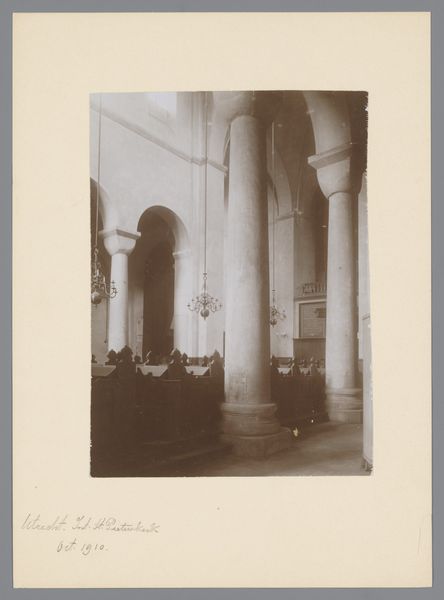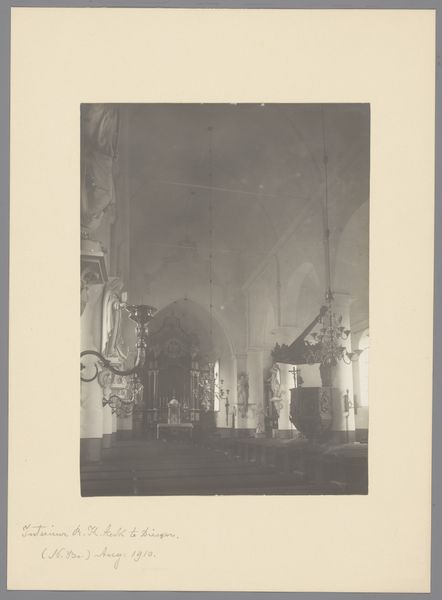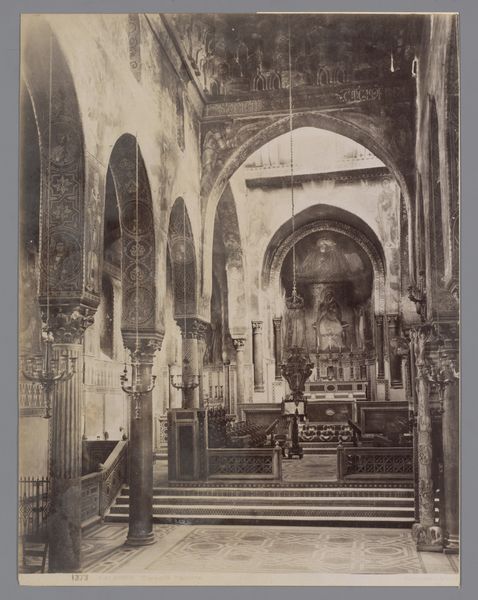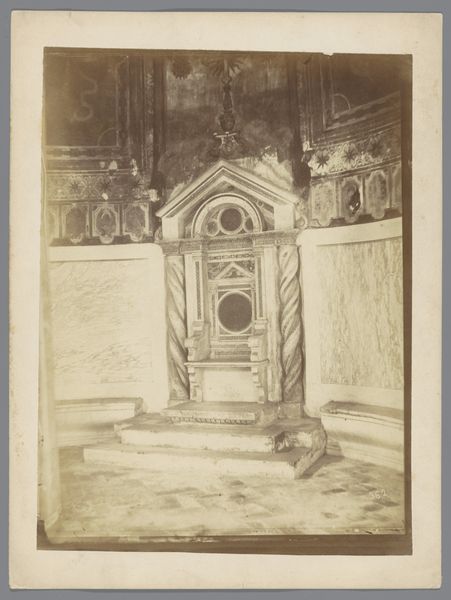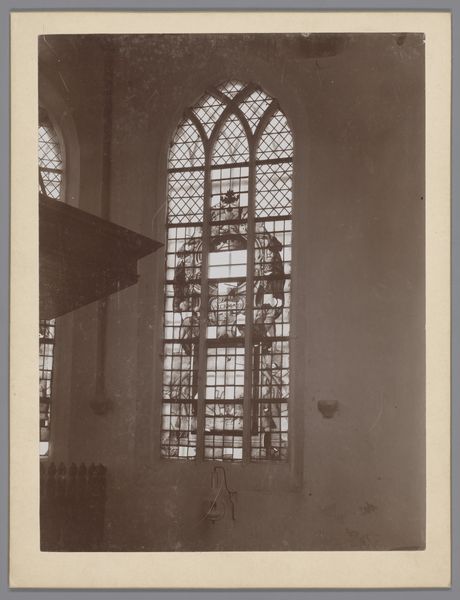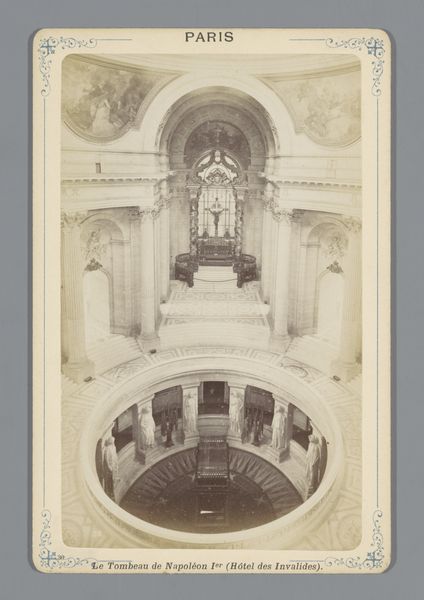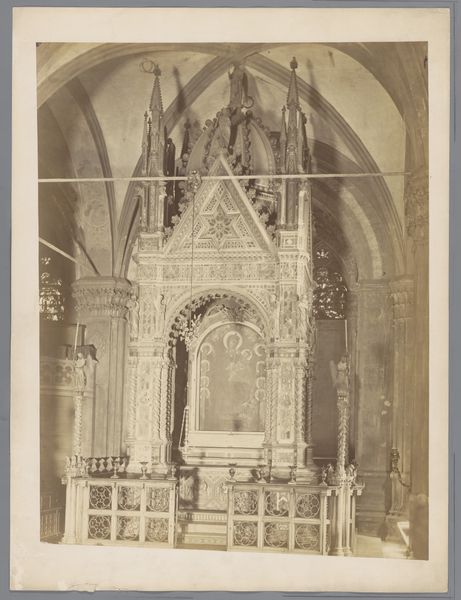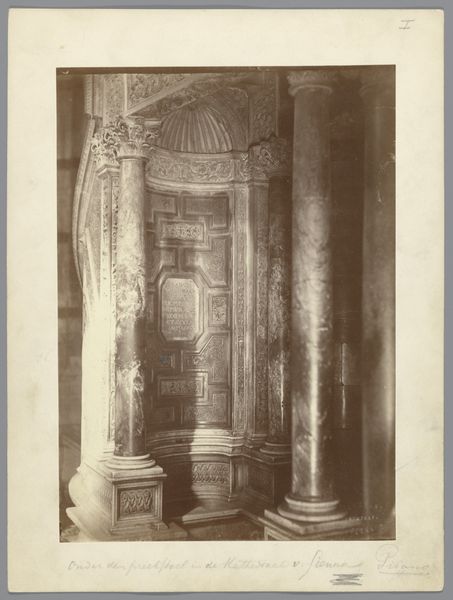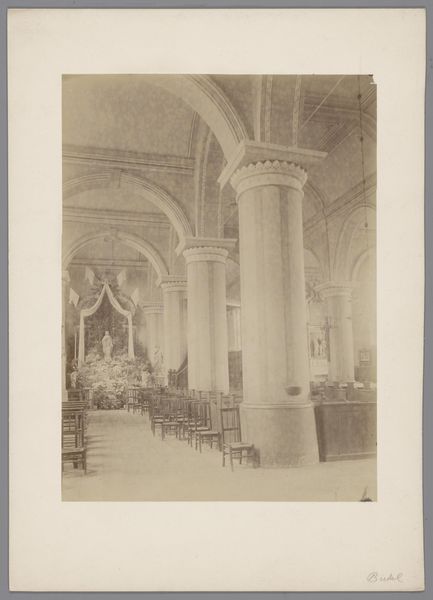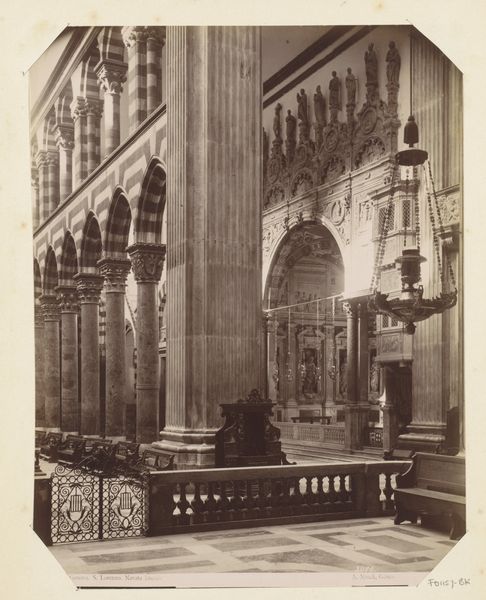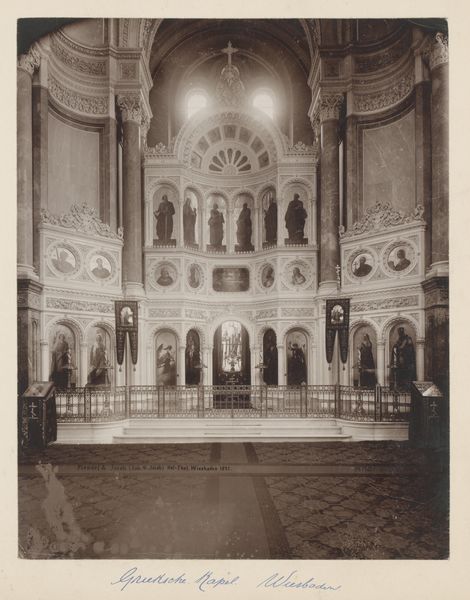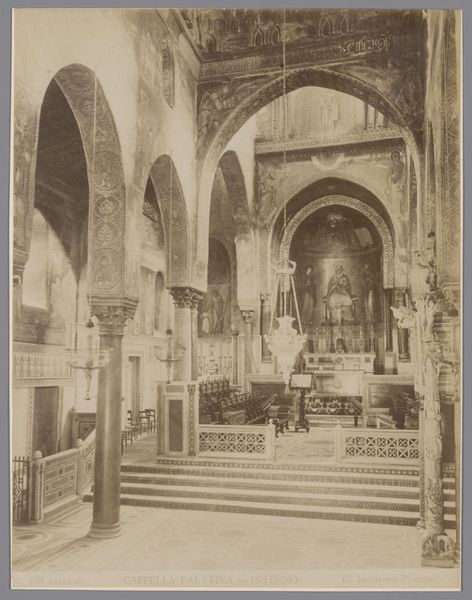
photography
#
historical design
#
photography
#
geometric
#
islamic-art
#
genre-painting
Dimensions: height 270 mm, width 210 mm
Copyright: Rijks Museum: Open Domain
Editor: This photograph, "Interior of the Süleymaniye Mosque in Istanbul," captured between 1888 and 1900 by Sèbah & Joaillier, is remarkable. The stark lighting and geometry create a serene atmosphere. What visual stories do you see in this composition? Curator: This photograph speaks volumes through its architectural symbols. Consider the mihrab, its niche oriented towards Mecca, a constant reminder of direction and spiritual focus. It’s not merely a functional element; it is a cultural marker of shared faith. Do you notice how the photographer plays with the geometric patterns? Editor: I do, yes. The way the light catches the geometric patterns almost feels hypnotic. Curator: Precisely. That geometry is deliberate. Islamic art often utilizes geometric designs to represent the infinite nature of God. It encourages contemplation. Beyond aesthetics, geometric symbolism served to create order and make profound meaning accessible. The careful depiction and repetition remind one that sacred traditions should always be respected. Editor: So the symbols aren’t just decoration; they’re an integral part of the spiritual experience itself. Curator: Indeed. Photography in this period documented architecture, yes, but it also became a tool for understanding cultural values. What does this image communicate about cultural memory? Editor: It evokes a sense of timelessness and continuity. These patterns and this architectural style connect past generations with the present. This isn’t just a photograph, but it also portrays faith through an interesting viewpoint. Curator: Exactly. The photograph creates a powerful sense of connection across time and beliefs.
Comments
No comments
Be the first to comment and join the conversation on the ultimate creative platform.
